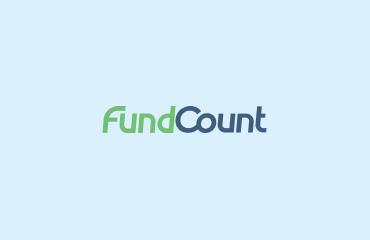Interview with James Haluszczak, Managing Partner, SteelBridge Consulting
James Haluszczak, industry veteran and founder of SteelBridge Consulting, and his firm are exclusively focused on serving as a strategic advisor to private equity and venture capital fund managers, investors, and administrators.
FundCount asked James to share his perspective on the top 5 asset management trends that he anticipates will have the greatest impact on the private capital industry in 2020. Here’s what he had to say.
1) Adoption of Process Workflow Automation
Workflow automation will play an increasingly important role in 2020. Asset managers will continue to look for efficiencies by automating key processes, such as bank wire verifications, the general partner (GP) carry process, and expense allocations, which are often manual. If these processes are automated and can capture historical data, asset managers will significantly reduce risk and gain operational economies of scale.
In the private capital sector, there is a massive shift across all fund managers looking to put process automation in place. There are core systems with workflow automation already built into their platform, but this control is only focused on workflows specific to that particular system.
Asset managers are now looking to control approvals and processes for both internal and external constituents that span multiple systems. Incumbent systems generally do not offer business process management within their system. As a result, we are seeing more firms looking at broader process control systems such as Unqork and Appian or private capital industry specific process automation and data integration solutions like Exchangelodge. Large fund administrators have also stepped in, offering administration oversight functionality and services, which is increasing asset managers’ reliance on external support to govern these processes.
2) Greater Prevalence of Automated Self-service Investor Management Tools
Self-service capabilities are becoming more common, allowing limited partners (LPs) to manage the often time-consuming effort of managing who on their team should receive what information from their fund managers (GPs). This self-servicing is reducing the bottleneck often caused by the fund accounting and investor relations staff due to being overwhelmed with often unclear contact change requests. Beyond contact management, we are seeing a major shift toward enabling investors to easily gain access to and provide oversight of asset management information using dashboards and automated, self-service portals. These LP portals provide insight into a firm’s accounting while still allowing the fund manager to have the ability to control access and the level of information that an investor can view.
These tools are reducing the need for frequent manual communications and ad hoc reporting previously performed by the accounting and investor relations teams while continuing to allow the fund manager to maintain access control. Investors’ reliance on frustrating and frequent direct touchpoints are being reduced, however, we must remember the private capital industry is a relationship-based business, so we will never entirely eliminate direct touchpoints – there will always be a need for investor contact.
3) GP Fund Accounting to Become More Core to Accounting Operations
The private capital industry has a handful of enterprise-grade fund accounting software platforms. While these systems run the books for the entity as a whole as well as for the underlying limited partners, the GP fund accounting processes have not always been a core focus point.
In 2020, GP fund accounting will become more core to a firm’s accounting operations. I believe we will continue to see evolving products and feature sets that can specifically handle GP fund accounting processes, such as GP carry complexities and expenses, with regards to the limited partners, general partners, and the management company.
4) Interoperability to be a Key Strategic Priority
Interoperability is a massive trend as asset managers utilize technology integration between multiple solutions for data capture, business intelligence, customer relationship management, reporting and other business needs. It is also one of the highest priorities for established large and mid-market fund managers. These firms are already spending time, resources, and money on solving the interoperability challenge and creating a technology stack that is fully integrated.
Emerging managers, who have a lower reliance on enterprise products, are seeing the same need for interoperability. They are capitalizing on the greenfield operating environment by tackling this challenge from the start in order to enable more efficient scaling capability as they grow their firms.
FundCount has recognized the need for interoperability between systems and will be introducing connectivity to numerous applications that extend the benefits of FundCount. Both SteelBridge and FundCount expect to work closely with clients over the next few years to help them with their interoperability needs.
5) Mobile Remains Top of Mind
While mobile access and real-time reporting are driving rapid change in many industries, this is less true in the private capital markets at this time. However, we anticipate that over the mid-term we will see more need for mobile access and real-time reporting. To prepare for this, some of the industry’s software vendors already offer this capability on mobile devices, but it is not yet widespread nor is it a major requirement from investors. While mobile-friendly platforms are likely to become more popular, I believe changes in regulations will be crucial to the adoption of this capability.

